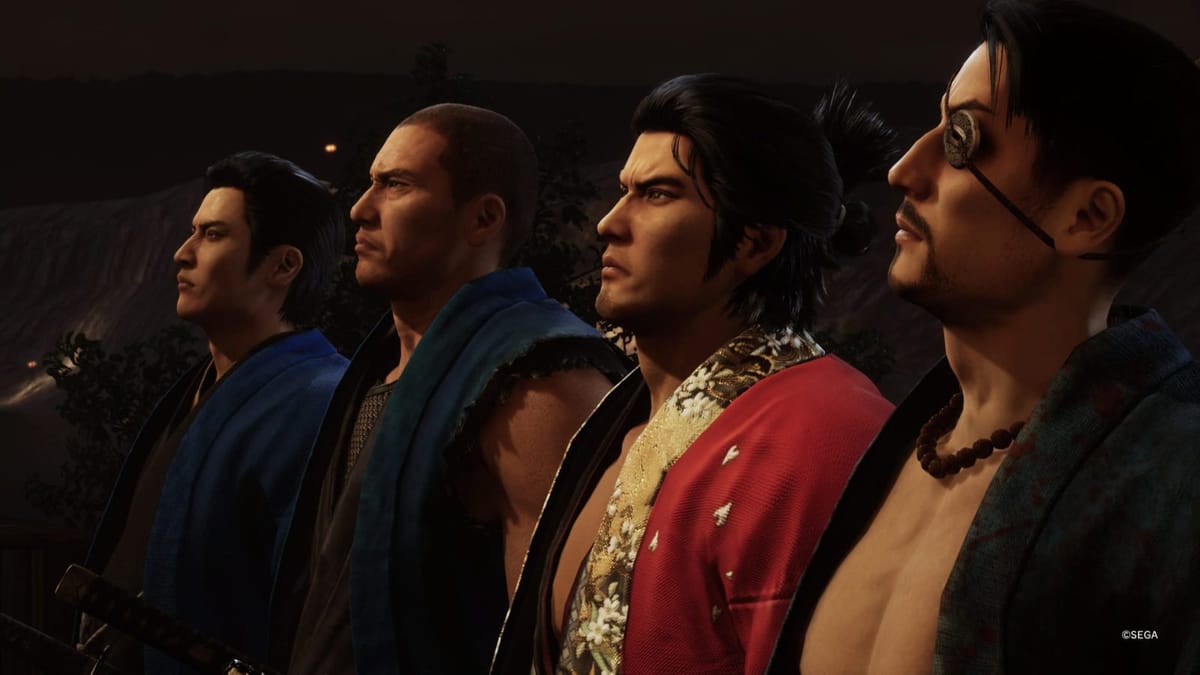
1866 Japan, the Tosa region. Sakamoto Ryoma has just returned from training in Edo to aid his adoptive father and sworn brother in revolutionizing the country by abolishing the caste system. Suddenly, Ryoma’s father is killed by a masked man using a strange sword style, framing Ryoma for the murder. Now exiled from his home and living under the name Saito Hajime, one year later, Ryoma has finally found a lead on the masked man’s identity. His style is the Tennen Rishin style, only known to a select few in the pro-Bakufu vigilante group known as the Shinsengumi. Ryoma infiltrates this group of killers to find the murderer, avenge his father, and reclaim his name.
Originally released as a PS4 launch window title, the Like A Dragon spinoff Ishin! never released outside of Japan. Formerly known as the Yakuza series, the eastern crime drama had not yet reached any sort of popularity in the west. Now almost a decade later, the title is receiving the full remake treatment on PS4, PS5, Xbox, and Windows. David Flynn and Cassie Peterson join forces to revolutionize the late Edo period and determine if this remake really needed to be on the same console as the original.
Like a Dragon: Ishin! puts you in the sandals of Sakamoto Ryoma, a real historical figure, using the likeness of long-time Yakuza protagonist Kazuma Kiryu. Pretty much every major character you meet bears the guise of a Like A Dragon character, including a few faces from the most recent, mainline entry. It’s an interesting take on historical fiction, though remembering all these beloved characters’ new names can be difficult if you’re intimately familiar with the series. Ishin also returns to the beat em’ up style that the main games recently moved on from – it’s simultaneously a blast from the past and something entirely new for western fans.
If you’re unfamiliar with Yakuza combat, pressing square will execute a combo while triangle will perform a finisher move, which changes depending on where you are in the combo. The X button allows you to dodge, Circle serves as a grab or other miscellaneous move, and holding L1 will have your character guard while R1 will lock on to an opponent. As you fight, you’ll build up your heat meter, which you can then spend on devastating attacks by fulfilling certain requirements and pressing Triangle. The basics remain the same here, though the specifics vary wildly.
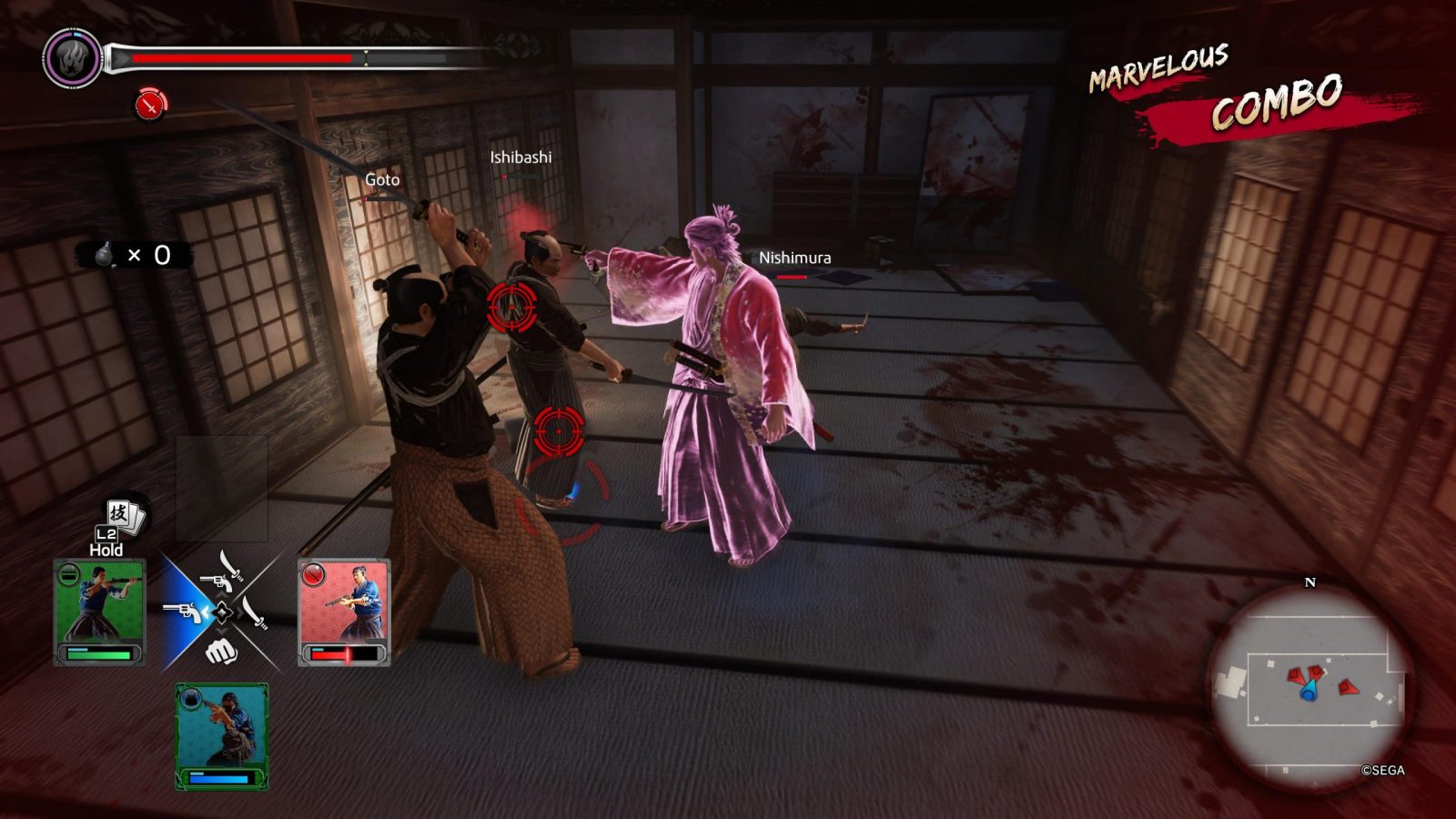
On PC, the game has full support for mouse and keyboard as well as controller, although real samurai use a gamepad (controller). Clearly the developers intended for the player to use a controller instead of mouse and keyboard, which makes sense as the controls for mouse and keyboard are tedious to learn and map. Being able to plug in a controller of choice removes that struggle, making the overall experience smoother.
Ryoma will quickly gain access to four fighting styles utilizing a combination of his fists, katana, and gun swapped by pressing the corresponding buttons on the D-Pad. Swordsman is your standard moveset, utilizing a katana for slow yet powerful strikes with Square and Triangle as well as Circle serving as a guard break. While you’re slow to move and dodge in this style, you can block and parry most enemies since they also use swords.
Gunman is something novel for the series: a mostly ranged style. Using a flintlock pistol, you can rapidly fire (which is certainly not period appropriate, but fun and hilarious) your infinite supply of normal bullets with Square, while Triangle will perform more powerful trick shots using limited, special ammo. While you can grab and throw opponents with Circle, you don’t have any defense against enemies who get in your face other than a slow and unresponsive dodge or a strictly timed parry.
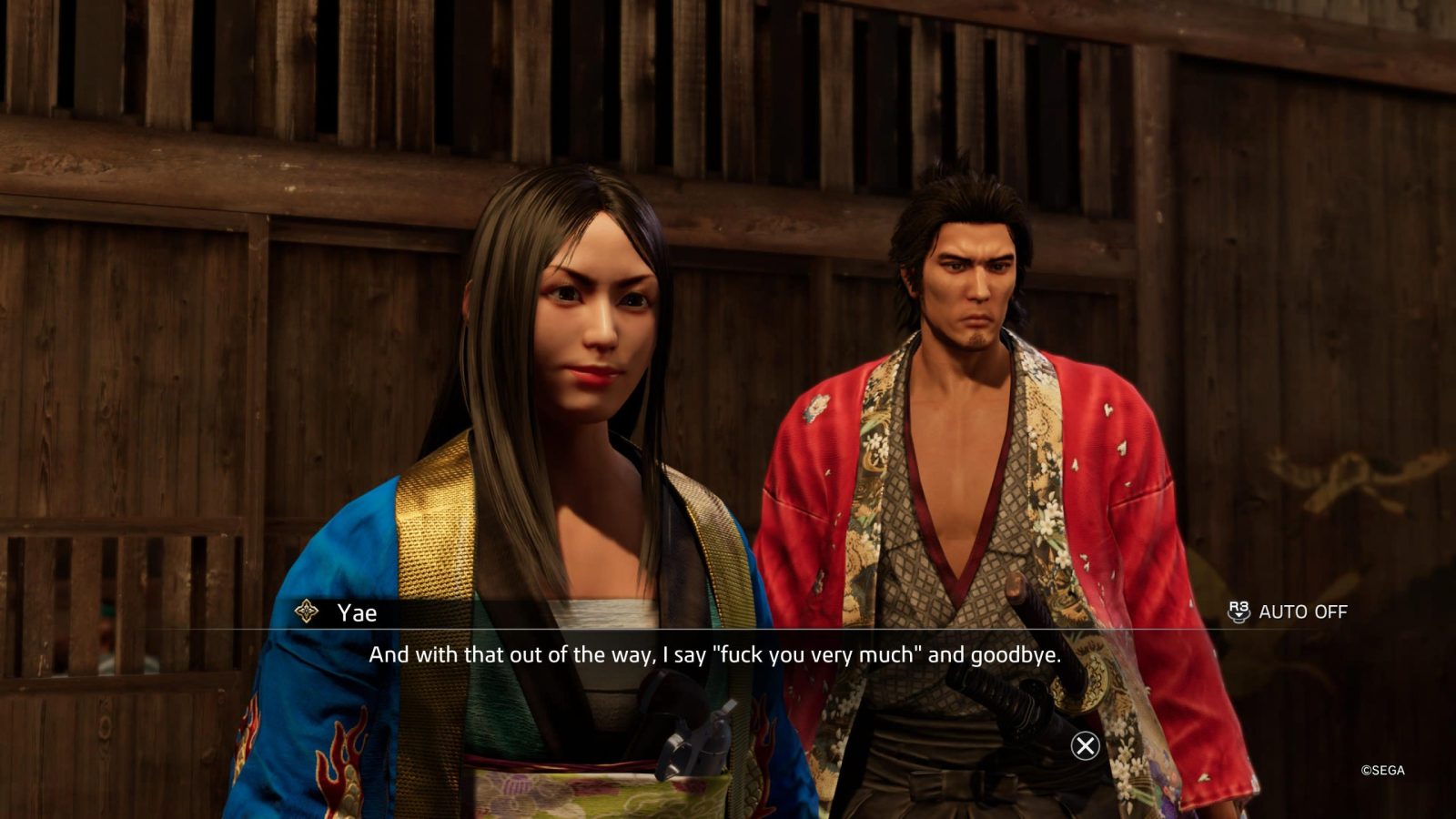
Brawler is basically just a leftover from the main games and is pretty useless here. It does pitiful damage, is easily blocked, and has almost no defensive capabilities. It is, however, still pretty fun to break out occasionally for its laundry list of heat attacks that, while still doing very little damage, are enjoyable to watch.
Finally, Wild Dancer is simultaneously the best and worst part of the game, being equal parts the most elegant and the most deadly style. Wielding Ryoma’s sword (Square) and pistol (Triangle) at the same time, this style easily overwhelms enemies with an onslaught of non-stop attacks in all directions and from any distance. You can cancel out any move by dodging, which will give you a generous amount of invincibility frames and can be executed several times in a row. Wild Dancer’s Circle combo has Ryoma spin around, swinging his katana while also firing his pistol in an attack that can easily take out most groups of enemies. It’s easily the most enjoyable and creative style, with some insanely cool heat attacks to boot.
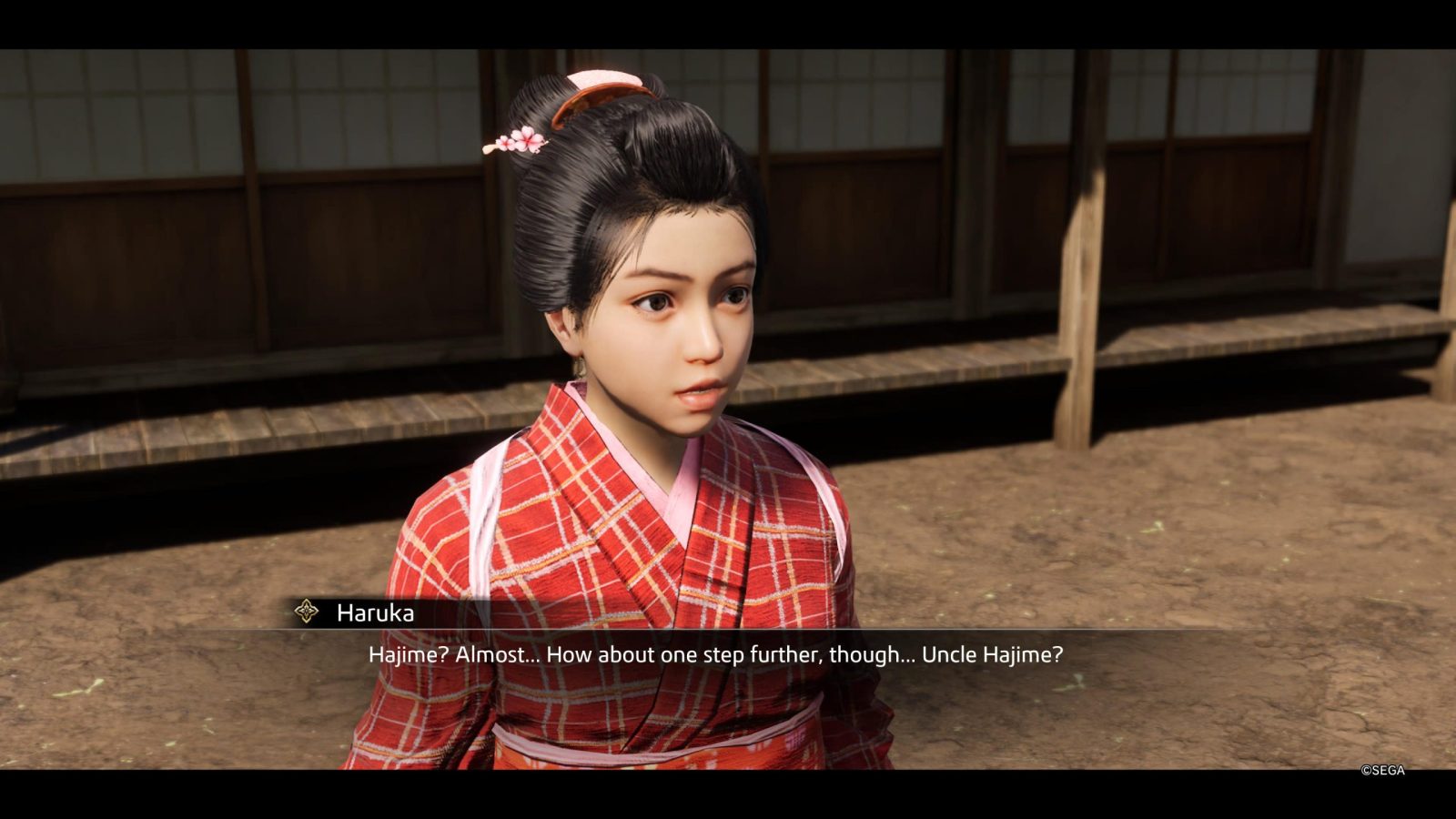
From that description, you may be wondering what the downsides to Wild Dancer are to balance it out. There are none. That is Ishin’s biggest issue, Wild Dancer is extremely overpowered and, while fun for a few hours, quickly sucks most enjoyment from the combat by always being your best option in every single fight. The style starts off extremely powerful, but can be further leveled up using the skill tree so, for example, the end of your Square combo will instantly transition into the start of the same Square combo. The boss fights against Majima (here known as Okita) are always some of the best parts of any Yakuza game, the Mad Dog putting all your skills to the test as your best friend/rival. Using Wild Dancer, I was able to defeat his first boss fight in two combos, while his second went down in just one. You literally just mash Square to win here. Sure it’s funny the first time you do it, but after that, it’s just boring. Sure individual attacks are weaker than Swordsman, but your damage per second easily overtakes it and the constant barrage of sword strikes will break even the final boss’s guard. You could handicap yourself by sticking to Swordsman or Gunman, but their defensive options just suck comparatively – every enemy will easily be able to break your block and the dodge is just garbage. We both played on Normal difficulty, but I don’t imagine the dominant strategy will change much on higher modes.
Besides the novel setting, Ishin doesn’t do much to stand out against other entries in the series. It’s not a bad game, far from it, but it does demonstrate why the main series has moved to turn-based combat; there’s just not much new ground to tread in this action style. The story, while a good melodrama on its own, doesn’t have many standout characters and relies a lot on remembering the names of all the political powers, how they work, and what exactly they do. There is a glossary you can pull up in cutscenes whenever certain terms are mentioned, but it comes nowhere close to covering everything it should. Even so, the mystery of the masked man will at least carry you through to the end of the game, along with a fantastic final sequence. There’s also a romance, but it’s not as well done as 2 and there’s not much focus on it.
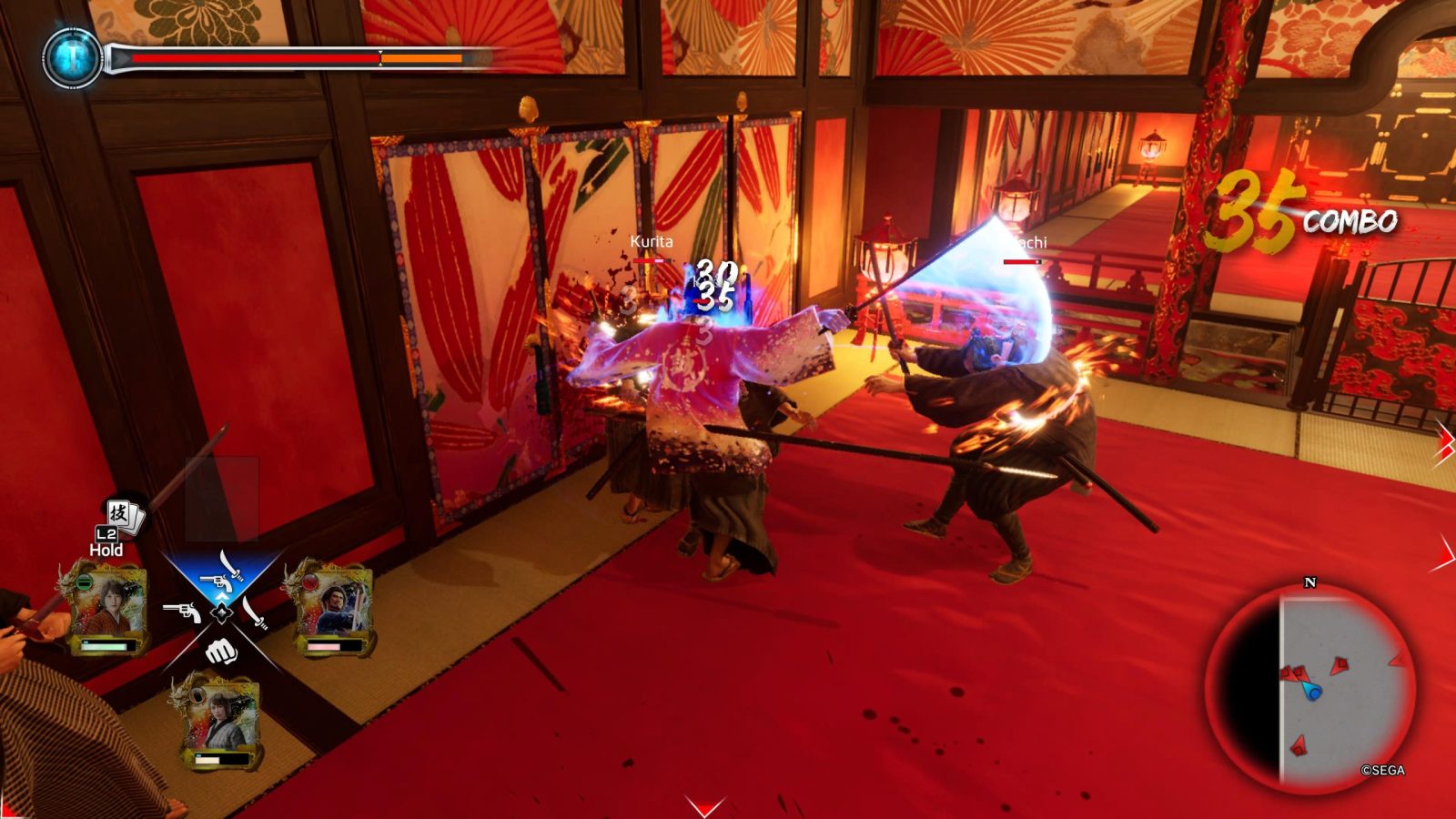
The game also feels pretty arcade-y in comparison to the Yakuza and Judgment games; movements aren’t as fluid and sometimes gameplay can be clunky. It feels like some elements of development were left on the table, resulting in a game that falls short of its true potential as another intriguing Yakuza spin-off.
As usual, there are a ton of side things to do in the city of Kyo. You can sing in a bar, dance at a studio, go fishing, and even play a little Harvest Moon in this game’s Haruka cameo. (Kiryu’s adopted daughter in the main series.) The side stories are standard fare for the series, though I would recommend you play through Yae’s (Miss Tatsu) questline and the “Ee ja nai ka” story as they’re the most interesting quest chains and somewhat take advantage of the setting.
At a certain point in the story, Ryoma will be made a captain of the Shinsengumi, commanding the Third Division. This appointment comes with perks and responsibilities. You can go on missions to eliminate Shishi who support the Emperor, which are basically short dungeons with rooms of enemies. They’re good for grinding experience or cash. Your new station also comes with troops you can call on in battle. Each style can assign three to four character cards accessed by holding L2 and pressing the corresponding button on the D-Pad. Characters come with special abilities, like increased attack power, health regen, or even powerful attacks. They charge up through performing well in a battle, and you have the option to automatically activate them when ready. They gain experience and level up just like you do, so pick your favorites and stick with them.
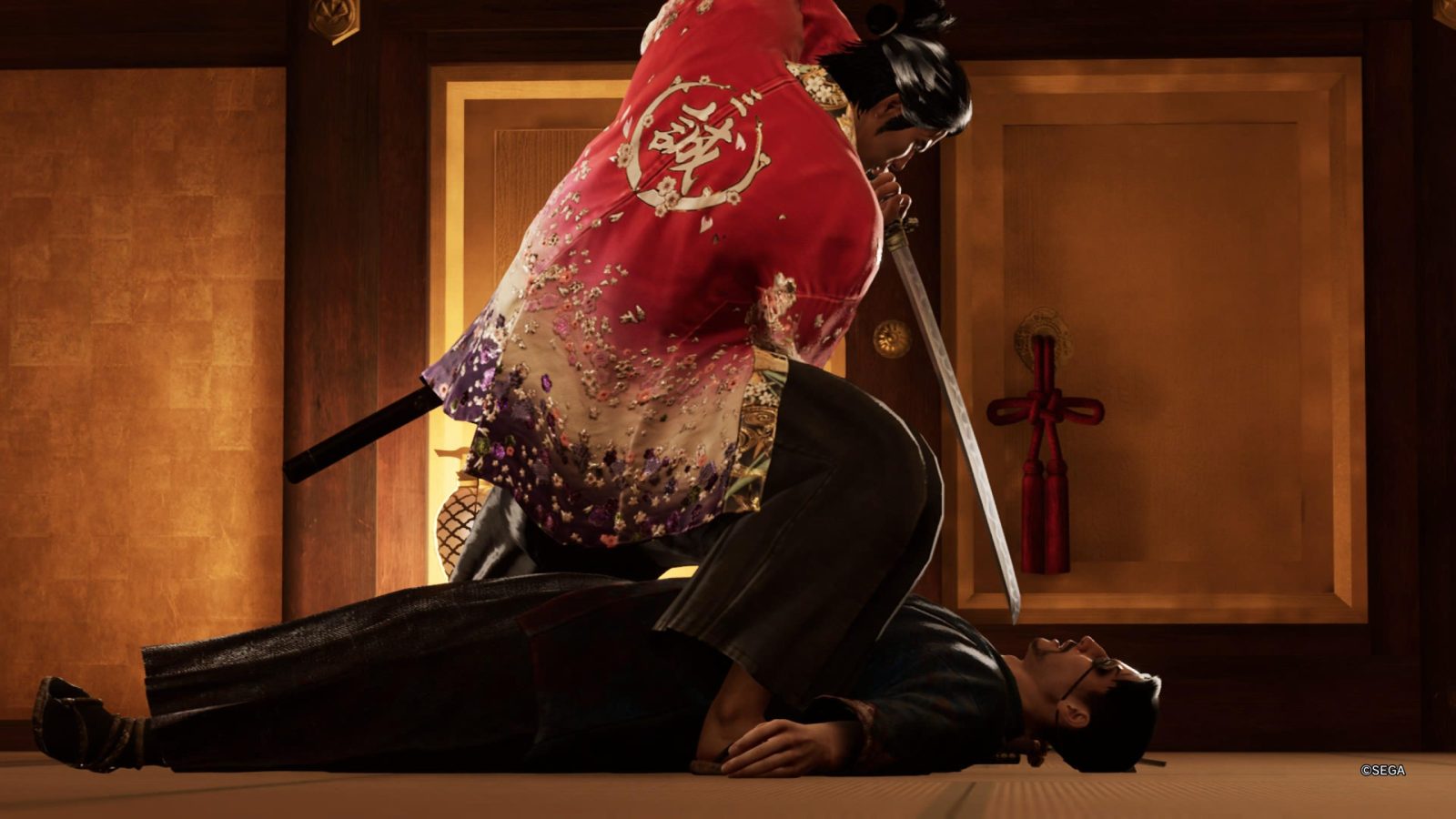
Speaking of leveling up, each style has its own level and skill tree along with Ryoma’s character level. Leveling up a style will earn you a colored orb to use in that style’s tree, unlocking new moves, heat attacks, and increasing your attack power. While red, blue, yellow, and green orbs are restricted to their specific trees, white Training Orbs can be placed in any tree. These are what you earn with character levels, and you can later exchange placed white orbs for colored ones, allowing you to place the white orb somewhere else. It’s a really interesting leveling system, giving players a nice amount of wiggle room on what is otherwise a linear path.
Your experience with Ishin may be better or worse depending on what platform you’re playing on. The PlayStation 5 version is very, very glitchy with NPCs wiggling into the ground, cutscenes flickering quickly with no characters on screen, and it even crashed after defeating a boss with a long set piece, requiring me to do it all over again. Meanwhile, other than some bad Keyboard and Mouse controls, PC is virtually flawless. It’s strange since this was originally a PS exclusive, but it’s no longer the best way to play. The visual upgrade from said original game is a big step up, though you can tell it’s still being held back by the PS4’s hardware.In the end, however, this is still an entry that should be added to your Yakuza collection.
Like a Dragon: Ishin
Great
Like A Dragon: Ishin! is a great game, but doesn’t do much to stand out against other games in the series. The story and setting are novel and interesting, however, the combat lacks any sort of balance. Even so, the excellent melodrama is worth seeing through to the end.
Pros
- Great melodrama
- Historical fiction aspect is awesome
- Tons of side content
- Haruka cameo
Cons
- Wild Dancer is very overpowered
- Side quests don’t take much advantage of the setting
- PS5 is extremely glitchy
